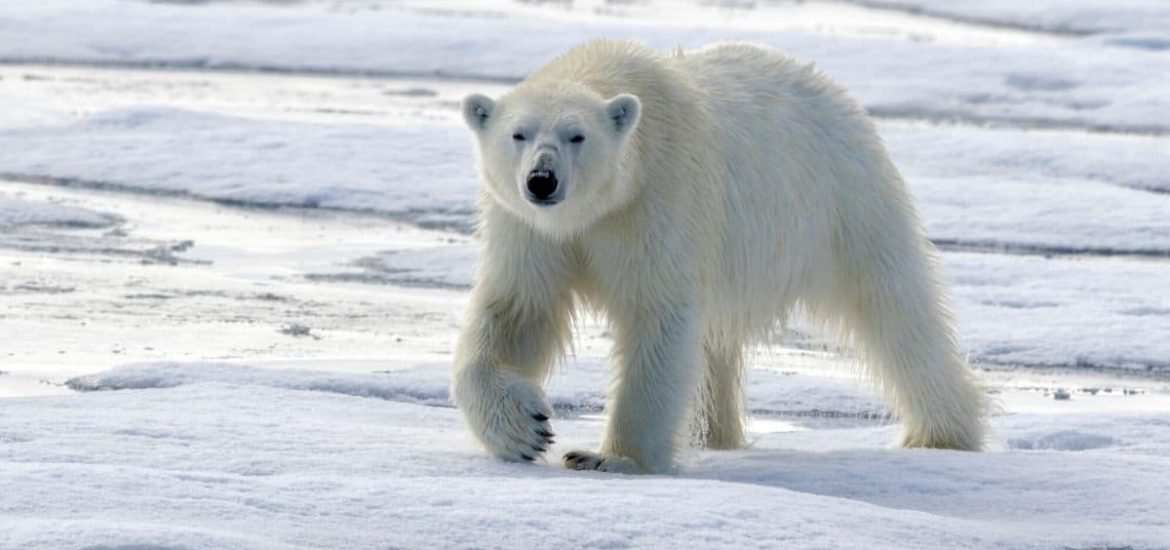
Most polar bears are at risk of being wiped out by the end of the century due to global warming, according to a new study published on 20 July in Nature Climate Change (1).
Polar bears rely on sea ice to hunt and capture seals as food – where they wait for them to surface through holes in the ice – but are unable to find enough nutrition on land. However, the Arctic is warming much faster than the rest of the planet due to the climate crisis; therefore, polar bears will soon be left without a suitable hunting ground as large areas of Arctic sea ice continue to melt.
As co-author Dr Péter Molnár of the University of Toronto told The Guardian: “It’s been clear for some time that polar bears are going to suffer under climate change. But what was not fully clear was when we would expect major declines in the survival and reproduction of polar bears that could ultimately lead to their extirpation. We didn’t know whether that would happen early or later in this century.”
Polar bears are accustomed to fasting for months at a time in the spring and summer when the ice temporarily melts. But of course, there is a limit to how long the bears can reasonably survive without an adequate source of food. Long periods of fasting will eventually affect their body condition, reproductive capacity, and ultimately, their survival.
At present, there are less than 25,000 polar bears left, including 19 subpopulations spread across Norway, Canada, Alaska, and Siberia. The team of researchers assessed 13 of those subpopulations, representing around 80 per cent of the estimated remaining polar bears. More specifically, they modelled polar bear energy use, which they used to derive the threshold number of days the animals can fast before survival rates of both cubs and adults start to decline – the so-called fasting impact threshold.
Then, using an Earth system model they estimated the projected numbers of ice-free days based on two different greenhouse gas emissions scenarios: business as usual and a more moderate scenario in which emissions peak in 2040 followed by a decline.
To determine how global warming will impact polar bear survival, the researchers compared the projected number of ice-free days with the fasting thresholds to determine when polar bear populations in various regions across the Arctic are likely to be impacted.
Under the business-as-usual model, most polar bears are likely to face extinction by 2100. Only those residing on the Queen Elizabeth Islands of Northern Canada will remain. The study revealed that polar bears in the southern Hudson Bay and the Davis Strait in Canada could fail to reproduce by as early as 2040, leading to local extinction – the polar bear population in western Hudson Bay has already decreased by 30 per cent since 1987. In addition, the analysis showed that most bears in Alaska and Russia could be at risk by 2080.
Even the more modest global warming projections indicate that many polar bear subpopulations could be wiped out by 2100. Polar bears can only be saved by protecting their habitat, which requires reducing greenhouse gas emissions on a global level – and time is of the essence.
“I’m well aware that the story we’re telling is a grim one,” said Molnár. “But there is also an element of hope that they are not completely doomed if we change our behaviour.”
(1) Molnár, P.K. et al. Fasting season length sets temporal limits for global polar bear persistence. Nature Climate Change (2020). DOI: 10.1038/s41558-020-0818-9